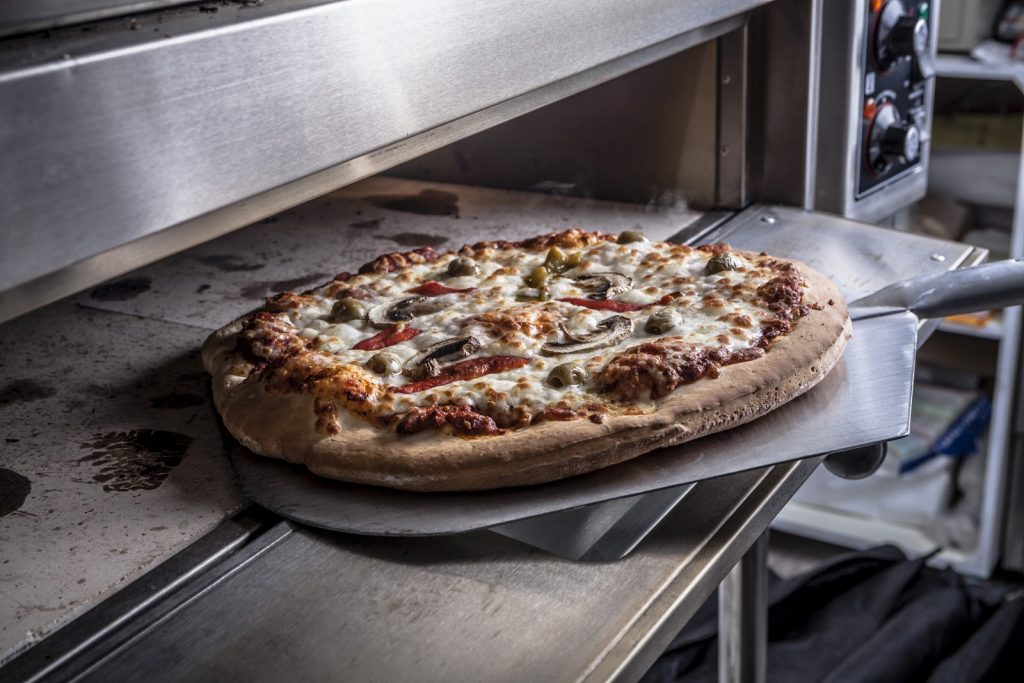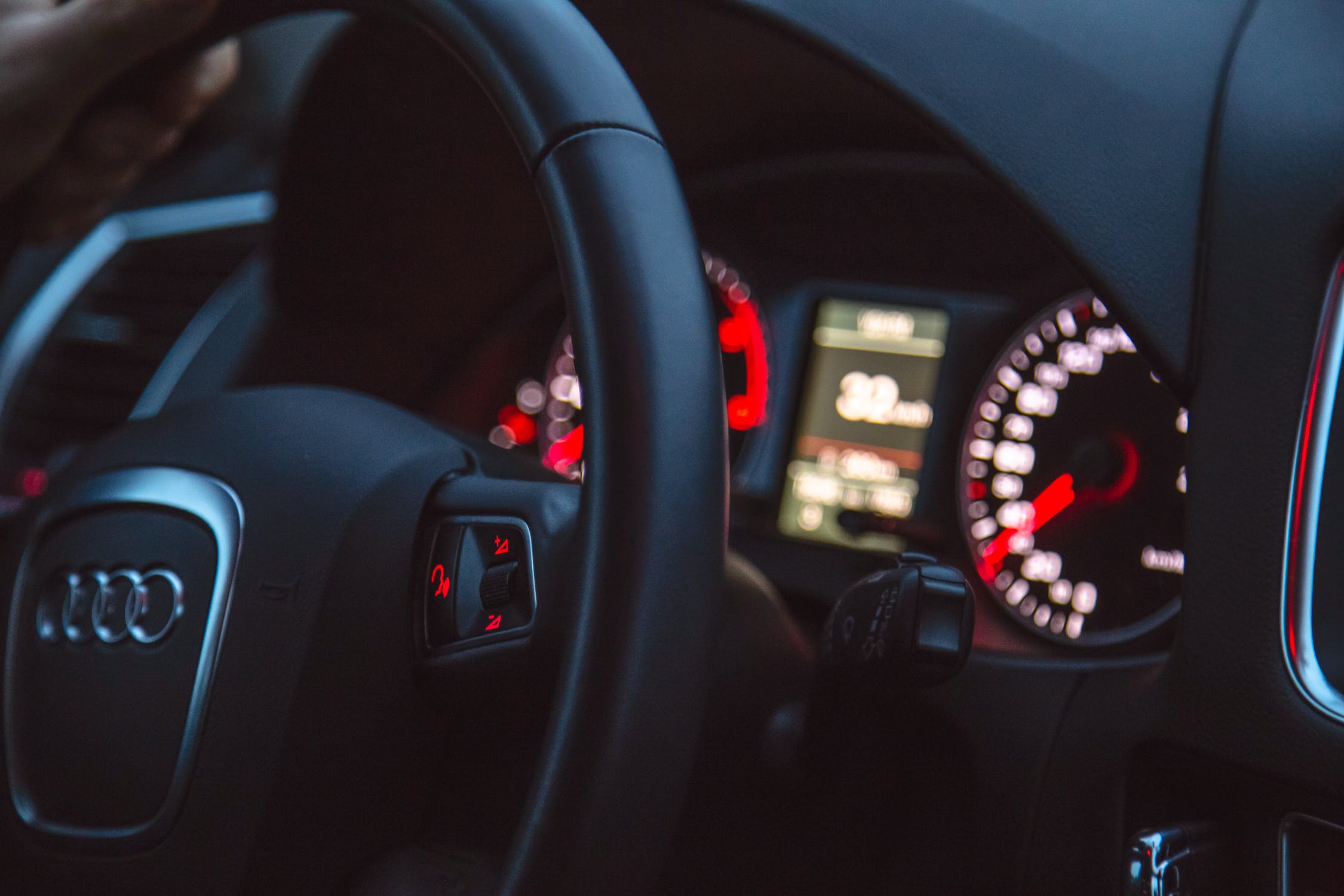A few years ago the pizza oven market opened to the public – pizza ovens stopped being sold solely to professional pizza makers and found their way to private alcoves. Since then, there’s been a fiery debate about which types of pizza ovens are superior… and till this day there’s still no clear winner. Let’s take a closer look at the two most prominent contenders and try to figure out when they’ll be the best choice.
Wood-fired pizza oven – a blast from the past or the only authentic pizza experience?
Any traditional Italian pizzaiola and many pizza enthusiasts across the world consider wood-fired ovens to be the only way to cook authentic Neapolitan style pizzas. Thanks to higher cooking temperature (a wood-fired oven can easily go above 500°C) pizzas cooked in a wood-fired oven have crispier crusts giving them that distinctive, satisfying crunch.
Wood burning also gives pizzas a distinguishing ‘smokey’ flavour. High temperatures also mean that the pizza is cooked much faster – the best wood-fired pizza oven can make it ready in under 2 minutes (about 90 seconds)!
Unfortunately, making allegedly the best pizza known to man requires practice and experience – some say you’ll need years or even decades to learn how to make authentic, delicious pizzas using a wood-fired oven. Why is that? While fast cooking pizza, the burning wood stays in the oven – this speeds up the process but also makes it harder to maintain just the right temperature. Plus the pizza must be moved around if you want it to be cooked evenly from all sides. You can negate this by removing the wood and ashes before putting in the pizza dough, so it will be evenly baked by the heat radiating from the floor and the dome walls. However, this process takes much longer and might be considered wrong by pizza purists as pizza was always considered a dish with a short prep time.
Wood-fired ovens come in many shapes and sizes – from small (1-2 pies at a time), portable ones made from metal, to huge (9+ pies at a time), bulky masonry domes that can be set up in a garden. The materials used matter a lot, as they impact the oven’s heating time. Masonry refractory materials can take literal hours to get hot enough, but all the accumulated heat can be used to prepare other dishes long after the pizzas are ready. It will radiate for many hours, especially if the oven has doors. Metal ones will heat up and cool down faster, so they are more practical if you just want to pop up a few pizza pies and call it a day. Modular ovens are a kind of compromise – they’re made from refractory materials, but their walls are thinner than those of traditional ovens, which reduces the heating time.
Pros of wood-fired oven:
- Unique, distinctive taste of pizza;
- Able to reach very high temperatures (500+ degrees);
- Short cooking time for pizza (even only 90 seconds);
- Available in varied shapes and sizes;
- Accumulated, leftover heat can be used for preparing other dishes (especially in masonry ones);
- Can be used for low-temperature and slow cooking;
- Can be integrated with other small garden architecture (e.g., grills or smoke boxes);
- Great as an outdoor pizza oven;
- Portable models can be set up almost anywhere.
Cons of wood-fired oven:
- Long heating time (big masonry ones can even take several hours to reach desired temperature);
- Larger ones can be very fuel-consuming, hence expensive to run on a day-to-day basis;
- Requires exhaust system for the smoke, which can be troublesome, e.g., in restaurants;
- Cooking pizza in it requires some practice and experience;
- Can take up a lot of room, depending on the size;
- Relatively bad size/output ratio, which can be a problem in busy restaurants with limited space available.

Electric ovens – modern solution for old problems?
Although an electric oven might be considered almost a heresy by some, there’s no denying that it’s an effective way to prepare pizza. It takes a bit longer, as the pies are ready in about 5-8 minutes, but that’s not really a problem in non-commercial use.
Most electrical ovens aren’t able to reach as high temperature as traditional ones, so the pizza won’t get as crispy due to the higher moisture of the dough. Does that make it worse? Not quite, as it will retain its visual and textural qualities for longer and will reheat better, which is important when you cook pizza for takeout.
What about the taste? Just a few years ago there was a real gap here, but the newest technological solutions allows us to get it really close to “the real deal” (e.g., the I.W.O.S. system). So, this argument can get invalid in the near future. Still, they will probably always lack that ‘smokey’ finishing touch that wood-fired oven offers.
Electric pizza oven is also far easier to operate – modern ones can be easily programmed with just a few button presses, and you won’t have to worry about your pizza not baking properly. It makes practically the same quality pies every time you set up that particular program. Some still require you to turn the pie around while it cooks, though.
An electric pizza oven is typically made from steel with a refractory base, which allows for both quick heat up time and good thermal conductivity (the heating elements are located below the stone base). Modern models can be ready to work in about 20 minutes, which is a gigantic leap from the prep period of wood-burning ones. Unfortunately, the electric oven isn’t as versatile as its traditional counterpart – it’s made specifically for cooking pizza and other dishes might not fit in it (especially in deck chambers which aren’t very tall) and it’s not that great for slow cooking.
Most electric ovens are deck type, which allows them to be stacked upon each other – it can be a real blessing for restaurants with very limited kitchen space.
Pros of electric oven:
- Fast heat up time (about 20 minutes);
- Easy to use;
- Doesn’t require much practice/experience to use properly;
- Most models don’t require dedicated exhaust systems, as they produce little smoke (exhaust hoods are often enough);
- Can produce tasty pizzas in relatively short time (5-8 minutes);
- Pizza lasts longer in its original state and still tastes good when reheated (great for takeout);
- Available in varied types and sizes;
- Newer models are equipped with energy-saving modes that allows you to keep them on standby without needing much power;
- Deck ones can be stacked up on each other to save space;
- Some models are really compact, perfect for small kitchens;
- Doesn’t produce waste (like ash or semi-burned wood/charcoal).
Cons of electric oven:
- Can’t bake “perfect” Italian (especially Neapolitan) pizza… yet;
- Pizza lacks that distinctive ‘smokey’ finishing touch;
- Can’t get as hot as traditional pizza ovens;
- Not really a multi-purpose cooking tool;
- Placement limited by access to electrical outlets;
- Can really raise the electrical bills when run for longer periods of time (especially older models);
- Not the best option for an outdoor pizza oven.

Which pizza oven is the best choice?
Well, to be honest, there’s no easy answer to this question. Both types have their pros and cons, making them better for certain types of scenarios. You’d have to consider all of them before picking the right tool for your particular case. In general, electric ovens are considered more suited for commercial use in semi-busy restaurants that are baking quite large quantities of pizza pies daily but with longer breaks between orders (e.g., several hours), while wood-fired oven would be better for the ones that are baking almost non-stop (as the ovens must be fed fuel even when they’re not in use, to maintain cooking temperature). When it comes to private use, wood-fired ones are better if you’re looking for a multi-purpose cooking/baking tool and the longer heating isn’t a problem for you. Especially if you dream about your own outdoor pizza oven. Choose the electric one, if you just want to pop up a few pizzas from time to time without worrying about having to fire it up hours beforehand.

Pizza ovens – great cooking tools, no matter the type
Setting aside the whole “best pizza debate”, a pizza oven is a great addition to any kitchen or garden, both private and commercial. No matter if it runs on electricity, wood or any other fuel, nothing can beat the feeling of making your first tasty pizza in your very own oven. Sure, you might burn a few pies at the beginning, but the experience of getting your pizza just right is a truly unique one.





